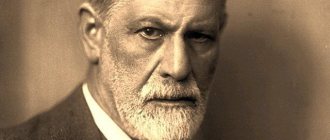What is creative activity?
This term refers to the creation by man of a new, previously non-existent product. Such activities include not only music, painting or poetry, but also a huge variety of other areas. Every person is capable of engaging in creative activities, regardless of their professional skills. This may be passive participation in research or scientific experiments. Anyone who empathizes or expresses other emotions can confidently say that they are engaged in creative activity. This fact does not only apply to humans - even animals are able to demonstrate their talents through unique opportunities.
Stages of the creative path
Different researchers offer their own gradations of the stages of the creative process. We will consider only three of them.
Soviet psychologist Yakov Aleksandrovich Ponomarev identifies four successive stages of his creative path:
The Russian popularizer of science Pyotr Engelmeyer considered the creative process from the point of view of the work of a scientist-inventor and identified only three stages of such activity. This:
P.K. Engelmeyer said this:
“In the first act the invention is assumed, in the second it is proven, in the third it is carried out. The first act defines it teleologically, the second – logically, the third – factually.”
Another Soviet psychologist P. M. Yakobson identified seven stages of the creative process. Here they are:
- Intellectual readiness for the act of creativity.
- Definition of the problem.
- The origin of the idea and the formulation of tasks.
- Finding solutions to these problems.
- Obtaining the principle of invention (discovery).
- Transforming a principle into a scheme.
- Technical design of the invention.
Visual arts
This creative activity has always occupied a special place in the life of mankind. Artists' works are considered cultural heritage and are subject to careful analysis. They are stored in rooms with a certain temperature and often in special frames that prevent the destruction of the canvas. The greatest creators have left an indelible mark on art. The smile of the “Mona Lisa” has haunted all connoisseurs of Leonardo da Vinci’s work for 5 centuries. Perhaps the most famous painting in the world causes a lot of talk and gossip. Someone compares the mysterious woman to a predator before the jump. To some, she seems to be the ideal of beauty. And there are those who do not see anything unusual in her and do not understand the hype around this portrait.
Thanks to artists, modern people can imagine how people lived and looked several centuries and even millennia ago. The most significant paintings are not put up for sale, but even less outstanding works by famous authors sometimes cost a fortune. Connoisseurs are willing to pay a lot of money for the right to own a work of art. The same “Mona Lisa” is estimated at a billion dollars, but you will never be able to see it at auction. Da Vinci wasn't the only one who created masterpieces. Paintings by Monet, Rembrandt, Titian, Goya, Salvador Dali. Renoir and Van Gogh are part of the world cultural heritage and are never put up for sale.
Creativity as a process
Creative activity is sometimes called combinatorial, but the uniqueness of its process is not limited to this.
The study of creativity began long before our era, and many ancient philosophers paid attention to this amazing activity, which reflects the very essence of human existence. But creativity began to be studied most actively from the beginning of the 20th century, and currently there are many theories and scientific directions in the study of this subject. It is studied by world-famous psychologists, sociologists, specialists in the field of cultural studies and even physiologists. Summarizing the research results, we can highlight several specific features of the creative process.
- This is a creative process, that is, its result is always not just a new product, but a product that is significant for society. True, there is also some contradiction here, which is the subject of dispute among specialists in the field of creativity psychology. If a person has designed a new type of deadly weapon, then this is also creativity. However, it cannot be called creative.
- The basis of the creative process is a special type of thinking, which is characterized by non-standardism, spontaneity and originality.
- Creative activity is associated with the subconscious, and inspiration plays a large role in it - a special altered state of consciousness, which is characterized by increased mental and physical activity.
- Creative activity has a clearly defined subjective side. It brings a sense of satisfaction to the creator. Moreover, pleasure comes not only from the result, but also from the process itself, and experiencing a state of inspiration is sometimes akin to the effects of a drug. This perception of creativity, the feeling of euphoria that the creator experiences, is the reason that a person often creates, creates unique things, not because he needs it, but because he likes it. An author can write “on the table” for years, an artist can give away his paintings to friends without thinking about exhibitions, and a talented designer can store his inventions in a barn.
However, creativity is still a social activity; it requires an assessment of society and is focused on the usefulness and necessity of the created product. Therefore, social approval is a very important and strong incentive that activates creativity and contributes to the development of creative abilities. Parents must remember this and actively encourage and praise their children for any manifestation of creativity.
Music
This is the biggest source of inspiration and an integral part of any person's life. Marriages are celebrated to the music and people are seen off on their last journey; without it it is impossible to imagine a holiday or a romantic evening. The sight of this creative activity can evoke a variety of emotions - from hatred to love. It was not for nothing that composers wrote music for the marches to which soldiers went to war. It evoked not only patriotic feelings, but also gave confidence in victory. In the modern world, music is increasingly heard in operating rooms and helps surgeons during complex operations. In feature films, compositions can set the viewer in the right mood and even warn about what will happen in the next scene.
Just like artists, composers and musicians convey mood through their creativity. The listener can easily imagine the situation that became the source of inspiration for the author. Lyrics can most strongly influence human emotions. Melodies of the dramatic and epic kind have their own properties, but the strings in the soul are touched by sensual leitmotifs. It is worth noting that music can influence not only humans. Some animals perceive melodies and even react to them on a physical level.
Basic theories of creativity
Sigmund Freud, Carl Jung, Alfred Adler, Erich Neumann, Abraham Maslow - all these scientists were more or less interested in the problem of creativity.
Thus, the well-known Austrian psychologist Sigmund Freud, the author of the theory of psychoanalysis, believed that creativity is a kind of sublimation of human sexual energy. But the father of analytical psychology, Carl Jung, considered archetypes of the collective unconscious – genetically formless structures that take shape in art – to be sources of creative inspiration.
An interesting theory is proposed by the founder of individual psychology, Alfred Adler. In his opinion, every person is initially endowed with creative potential. In addition, Adler's theory views art as a way for a person to compensate for his personal shortcomings and shortcomings.
Gestalt psychology views a person’s creative path as a special mental process, as a result of which disparate facts are combined into a single whole, which, in turn, leads to the so-called “insight”. According to the concept of Yakov Ponomarev, creativity is a mechanism and a key condition for the development of matter, the formation of its new forms and variations.
Literature
Humanity treats this creative activity with special trepidation. Reading has always been one of the best ways to spend your free time profitably. It develops imagination and makes you experience a variety of emotions. Writers and poets are able to draw people with their talent into an unprecedented world of adventure, love or detective puzzles. The creators of human souls, teachers and pedagogues, instill a love of reading from childhood, because literature can change any person. The love of poetry is instilled with the goal of turning a little person into a sensual and spiritually developed member of society. Many novels, detective stories and other literary works can give the reader the necessary life experience.
Cinema
Cinematography has recently become an integral part of life. The desire to show people what they read in books led to the development of creative activities in the field of visual art. At the moment, feature films and animation occupy the first place among popular entertainment in the world. For over a hundred years, people have been going to cinemas to experience another world and experience unforgettable moments. Thanks to this type of creative activity, humanity can easily travel back in time or look into the future, as well as learn about the details of important historical events. Cinema can develop human feelings such as intuition, compassion, love, hatred and many others.
Main types of human activities
You will be interested: The subject in philosophy is... Definition of the concept, meaning, problems
What is an activity? In the broadest sense, this is a person’s way of relating to the world around him. Human activity differs from animal activity in the following ways:
- Consciousness of the process.
- Focus on a specific result.
- Transformative nature of the activity.
Any human activity has goals, motives, methods, means and tools. It also has its own specific object (an object, a phenomenon, or the internal state of a person) towards which this activity is directed.
In social psychology, it is customary to distinguish five main types of human activity - creativity, play, learning, communication and work. We will talk about one of them in more detail below.
Arts and crafts
An equally important part of creative activity includes a huge variety of components: sewing, embroidery, knitting, weaving, burning, carving, mosaic, stained glass, decoupage, modeling, sculpture, weaving, painting. A person encounters this type of art every moment. Whole life is filled with patterns on finishing materials, dishes, clothes, and household items. Particular attention should be paid to this type of sculpture. Monuments that symbolize important events for the country and the world, as well as significant people in history, have always occupied an important place in the life of society. A few centuries ago, sculpture was the most popular form of art, admired by everyone - from the common people to kings. There are different priorities now, but it still has its weight in the culture.
Why is it important to engage in creative activities?
In all centuries, art has played a big role in human life. The craving for everything beautiful has led to the fact that the development of creative activity in children has become widespread. There are a large number of interest groups and various sections in any country. The child has the opportunity to choose what he wants to do in his free time. The choice is truly enormous, and this has significantly influenced the development of many industries over the past few decades. Already from childhood, a child must learn and develop in several directions, in addition to the school curriculum. This will help them achieve success in the future, because such people will be able to express their individuality.
Children and art
Children's creative activities help to reveal all aspects of a child's personality. You shouldn’t have high hopes for your baby and expect masterpieces from him - for an adult, these creations may not have any value. But it is by the works of children that one can easily determine their state of mind and help with the choice of a profession in later life. You should not set any tasks for your child in the process of creative activity. Only fantasy and imagination should accompany them on the path to art. For children, the end result is not important - they are interested in the process itself. As in any other aspect of life, you need to praise your child for any achievements and results. This inspires and gives strength for new achievements.
Academic and folk creativity
Creativity can be professional (academic) or primitive (folk). Everything here is extremely simple. Academicism in creativity is following clear and generally accepted rules and norms that are taught in special universities, academies and conservatories. Below is an example of academicism in painting.
Folk art, on the contrary, does not accept any rules. It is free and independent in its naivety. It is primitive, but not superficial. Folk craftsmen, as a rule, do not have special education and create from the inspiration of their hearts. For example, below is a drawing by a famous representative of folk art - Ukrainian artist Maria Primachenko.
Folk art has several subspecies. Among them:
- Primitive (naive) art.
- Decorative and applied arts.
- Folklore.
- Amateur artistic activity.
- Amateur (household) creativity.
Educational establishments
Great responsibility falls on the shoulders of educators and teachers. It depends on them how much the child will be developed and able to understand the world around him. Most educational institutions have hobby groups, and music classes are included in the school curriculum. In addition, festive events are held where children can fully reveal their talent in plays, skits and musical performances. Chemistry and physics lessons include practical exercises and experiments, and this is also an integral part of creative activity. Russian language and literature develop imagination through presentations and essays on given topics. It has long been proven that absolutely any child has the ability for creative activity, and the task of teachers is to see them and help develop them. Do not forget that activities chosen and imposed by parents can harm and alienate children from art.
Creative personality: how psychologists interpret the concept
A creative personality in psychology is a rather controversial concept. There are at least two approaches to its interpretation.
According to one of them, any personality is creative. The ability to create new things is inherent in human nature, and creativity is an integral need for personal self-development, which consists in creating something new and meaningful, primarily for the creator himself. In other words, creativity will be both a child’s drawing made for the first time and a mathematical equation solved for the first time.
According to the second approach, a creative person is an individual who experiences a stable and irresistible need for creativity and sees in it the main meaning of his life.
The importance of creative activity in the modern world
The beginning of the new century changed the idea of culture. Looking at modern creative people, the average person has ambivalent assessments of their activities. The idea has become firmly established in our minds that these are slackers who simply do not want to physically work and therefore become writers, actors, musicians and fashion designers. But at the same time, these people happily consume the product of their creativity: films, songs, clothes and much more. The 20th century was oversaturated with wars, and the worldview of mankind changed. However, even in the most difficult times, it was art that allowed people to cope with sorrows and troubles.
In the new millennium, human creative activity has become a necessity. Everyone now has the opportunity to do what they love and get a calling in their chosen profession. Without creativity, people would still be living in the Stone Age. Only interest and curiosity made man a rational being. All inventions and discoveries were part of the creative process. In order not to stop there and continue to improve the quality of life, you need to constantly move forward and give free rein to your imagination and fantasy. After all, what was described in science fiction novels fifty years ago and was considered incredible fiction is now accessible to anyone!
Two levels of activity
There are many types of activities that differ both in nature and in their product. But creativity cannot be called one of these types; rather, it can be considered as a level or stage of development of any sphere of human activity.
Reproductive activity
The first or lowest level is considered to be the reproductive or reproduction level. It is associated with the processes of mastering activity skills and learning. But for many people, their activities, including professional ones, remain at this level. Not because they study all their lives, but because reproductive activity is simpler and does not require much mental effort.
This level involves repeating techniques and actions developed by other people, creating a product based on a model. Let's say, a person who knits a sweater according to a pattern is engaged in reproductive activities, a teacher who uses the teaching methods proposed in teaching aids is also at this level, as is a housewife who prepares salads according to recipes found on the Internet.
And this is normal, for this purpose society accumulates and carefully preserves experience so that people can use it. Most people spend the bulk of their time engaged in reproductive activity, mastering social experience and using ready-made knowledge. True, reproductive activity in its pure form occurs mainly in the learning process. People tend to strive for something new and very often they introduce something of their own, original into other people’s schemes, developments, recipes, that is, they introduce creative elements into reproductive activity, thereby increasing social experience.
Creativity level
Unlike the reproductive level, the creative level involves the creation of a new product, new knowledge, and new ways of activity. It is this kind of activity that is the basis for the development of human civilization.
The creative level is theoretically accessible to every person with normal mental development, since everyone has creative potential. In fact, not everyone develops it, and the need for creativity inherent in children does not persist in all adults either. The reasons for this are very different, including the peculiarities of upbringing and the limitations of a society that does not need too many active creatives.
Creative activity, even with high potential, is impossible without reproductive activity. Before writing a symphony, the composer must master musical notation and master playing a musical instrument. Before writing a book, a writer must at least learn the letters, spelling and style rules. All this is done on the basis of assimilating ready-made experience, the knowledge that has been accumulated by other people.











